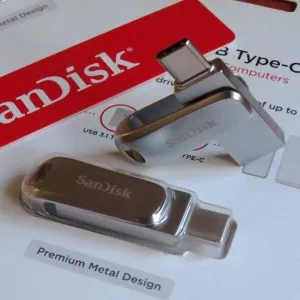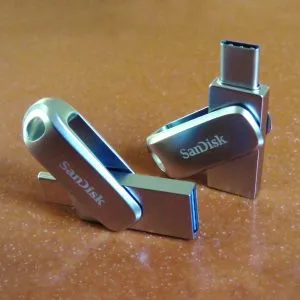Timeline of Hardware Updates at FilmFix
Reflecting back on the 18 years we've been in business, we've consistently stayed on the cutting edge of transfer technology. This commitment comes at a cost, but it's necessary for us to continue delivering work we're proud of. Below, we outline the advancements in our services, specifically categorized by the type of transfer:
Please note that this list excludes the numerous software upgrades and extra services we've introduced over the years.
Important Note: The list is in descending order, showcasing our most recent advancements first.
8mm and Super-8 Film Transfer
2023
- Major Target-Media Shift: Transitioned to delivering most transfers on Hard Drive or USB sticks, moving away from discs. This change accommodates modern SmartTVs' capabilities, making it easier for customers to view, share, customize menu titles, and edit their transferred films.


2020
- Introduced 80/20 Color Grading: making color grading more affordable. Find out more.
2019
- NEW - True Frame Rate Files: We have been capturing in a frame-by-frame manner since 2010 and furnished speed adjusted interpolated files. Now our files maintain the original frame rate of the film, whether it be 18 fps, 16 fps, or 24 fps, allowing for accurate post-production work. These type of transfer capture the original motion and timing, ensuring a for a more natural and smooth viewing experience. It preserves visual quality by avoiding frame interpolation, and reduces digital artifacts. Furthermore, it future-proofs content, making it adaptable to evolving technology standards, thus maintaining the footage's long-term value. This transfer type preserves the fidelity of the original film, offering significant benefits for archival quality and viewer experience. In short: this preserves the original motion and timing; improves visual quality; and "future proofs" your transfer.
2018
- Testing Competing "Wolverine": This Film2Digital MovieMaker-PRO 8mm and Super 8 Converter is not a contraption we ever used, we were only testing the results. - We will let you be the judge... Note: For a while, we also rented out the portable unit so that potential customers could preview their larger collections. That ended when the machine broke. (We were shocked to discover that some transfer companies were using this consumer product and referring to their work as professional "Full HD" transfers.)
2017
- Flash-Scanner Upgrade: A Game-Changer — Transfer unit has a Xenon Light Flash Scanner with laser sprocket hole trigger and automated light adjustments. (Our customers were previously very impressed - now they were even more expressive with their praise!)
2016
- Color Depth Enhancement: Upgraded to 10-bit color capturing, moving from 8-bit, for enhanced color accuracy in our transfers.
2012
- Upgrade to Full-HD: Our CCD3 HD camera allows for a frame-by-frame transfer. File format: MP4 6.5KBps 8-bit.
- All work is now processed via computer.
2010
- Frame Synchronizer Addition: Implemented a "Sync Installation Kit" to improve the frame-by-frame film transfer process, along with adjustments to lighting and post-production enhancements.
2005
- SD "real-time" transfer: It's important to note that there wasn't any professional equipment on the market for 8mm film transfers back then.
Initially we offered "real-time" film transfers of 8mm and Super-8 mm film using a Hitachi 3CCD SD camera. If film has sound, we include that in the transfer cost (few other companies even capture the sound, when films have it.) This type of "real-time" transfer was in standard definition (in PAL or NTSC) and had "mixed" frames. The transfer was set to 16.68 frames per second, a frame rate speed known to reduce the flicker effect. Having mixed frames had the disadvantage that post-processing of image stabilization resulted a sub-standard outcome. Further, any panning camera movement resulted in an undesirable effect and made the image have a ghost-like double image following the main image. The target media seems archaic to us now! We performed these transfers directly to VHS, Mini-DV and DVDs. Rather than having a computer involved, like it is today, the DVD was recorded "live" directly to a player. It makes us smile when we see how far we come since 2005.
VHS/Hi8/MiniDV Tape Transfer
2019
- ffmpeg Upscaling: Mastered the use of ffmpeg for upscaling standard definition video tape transfers to Full-HD, offering a significant improvement in video quality.
- Mold Removal Service: Introduced a service to handle and recover mold-damaged VHS tapes, a capability few transfer houses offer.
2005
- VHS, VHS-C, Hi8, and Mini-DV: to DVD and/or hard drive. (Today, nearly all tape orders are delivered onto a hard drive or USB stick.)
35mm Slide Transfer
2023
- Manual Color Grading: perform manual color adjustment after the initial automated adjustment to further enhance the image. Fun Fact: One pixel in 2006 is now represented by 10.16 pixels. This equates to an incredibly detailed and crisp image.
2020
- Equipment Upgrade: Transitioned to using a Sony α7R IV camera for slide transfers, boasting a 61.0 megapixel resolution, 9,504 × 6,336 pixel, for significantly improved image quality.
- Cleaning: Each slide is manually inspected and cleaned prior to digitizing.
2009
- Camera Upgrade: Upgraded to a Sony a900 camera, enhancing our slide transfer resolution to 6,000 × 4,000 pixels.
- TIFF Files: Offer at no extra charge
- Software Upgrade: Instead of using Photoshop, now using Capture One.
2006
- Digital SLR Introduction: Began using a Canon EOS 10D for slide transfers, marking our first use of a digital SLR camera in this service. The camera provided a resolution of 3,000 × 2,000 pixels.
- Color Grading: Using Photoshop to perform automated color adjustments.
16mm Film Transfer
2014
- Service Discontinuation: Very briefly offered 16mm film transfer in 2.6K resolution but decided to discontinue this service. It wasn't fair to continue, because 16mm film really deserves a 4K transfer, instead.









